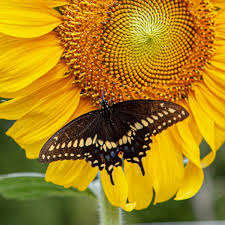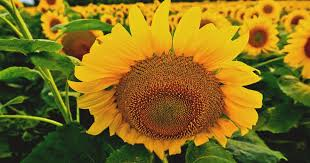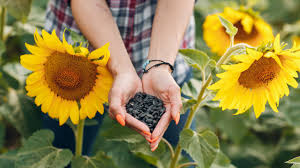Sunflowers have been captivating gardeners for over 4,000 years. Native to the Americas, they were a surprise to early European settlers who found them growing abundantly near villages. Some sunflowers were perennial species, while others were the annual varieties that continue to thrive in gardens today. What’s even more remarkable is how sunflowers seem to grow effortlessly on their own. As long as they have space, these resilient plants will often take care of themselves.
The Self-Sufficient Nature of Sunflowers
Sunflowers are natural self-sowers. Their seeds fall to the ground as they mature, and they are further spread by birds, which love sunflower seeds. The seeds quickly establish new plants, particularly in disturbed soil. This characteristic, combined with their rapid growth and impressive height, allows sunflowers to outgrow competing weeds and thrive even in less-than-ideal conditions.
The Role of Sunflowers in the Ecosystem
Not only are sunflowers low-maintenance, but they are also incredibly beneficial for pollinators like bees. Bees, butterflies, and other insects flock to sunflowers, making them an excellent choice for gardeners aiming to support local wildlife. Sunflowers have even been the focus of the Great Sunflower Project, which advocates for planting bee-friendly varieties, such as the popular Lemon Queen.

Varieties of Sunflowers: Branching vs. Upright
Sunflowers come in many varieties, each with unique features. Most sunflower species grown for their edible seeds are tall, upright plants that produce a single large flower head. These flowers often follow the sun’s movement during the day, a phenomenon known as heliotropism. However, branching varieties, like Moonwalker, produce several lateral branches, creating a colorful display of flowers over a longer period. These branching sunflowers can grow tall enough to form a stunning wall of blooms, perfect for gardens that seek to make a statement.
For those with limited space, there are also smaller sunflower varieties that grow well in containers. But nothing compares to the towering beauty of a large sunflower patch. These impressive plants often grow taller than the gardener, creating a striking natural barrier or a dramatic garden centerpiece.

Sunflowers and Their Historical Significance
Sunflowers weren’t always the garden favorites they are today. While native to North America, they traveled across the globe, with Russian botanists playing a key role in popularizing the plant. In Russia, sunflower oil became an essential substitute during Lent, when animal fats like butter and lard were forbidden by the Orthodox Church. Today, sunflower oil is widely used in cooking, including in snack foods like potato chips.
Harvesting and Preserving Sunflowers
Growing sunflowers isn’t just about enjoying their beauty; it’s also about reaping the rewards. Sunflowers are prized for their seeds, which can be harvested and enjoyed by both humans and wildlife. Typically, you can tell when it’s time to harvest when the last petals have withered, and seed-eating birds, such as goldfinches, begin visiting the flowers. Sunflower heads can contain up to 2,000 seeds, which need to be dried thoroughly before storage. The drying process usually takes a few weeks in a shaded outdoor area, followed by a brief time in a warm oven.

While sunflowers are often admired for their grandeur, many gardeners also cherish the surprise of seeing where the seeds will sprout the following year. Some gardeners may prefer hybrid sunflower varieties, which are male-sterile and don’t produce seeds or pollen. These varieties, like Procut and Sunrich, are ideal for floral arrangements without the worry of reseeding.
The Charm of Growing Sunflowers
Ultimately, the charm of growing sunflowers lies not only in their beauty but also in their ability to attract pollinators, provide food for birds, and create a lively and colorful garden. Whether you’re growing sunflowers for their seeds, their beauty, or their benefit to the environment, they remain one of the most rewarding plants to cultivate. And for those who embrace the carefree nature of these sun-loving flowers, there’s little better than watching them flourish year after year.
